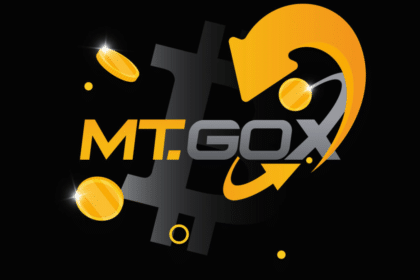Bitcoin (BTC) started the week holding steady above $84,000, showing limited movement amid growing geopolitical and economic uncertainty. Investors closely watched mixed signals from the White House regarding semiconductor and tech component tariffs. These developments created cautious optimism in some areas, yet concerns about long-term volatility remained high across global markets.
Bitcoin remained flat early Monday, trading around $84,558, as East Asian markets opened cautiously. Traders registered only a 1.01% gain while showing minimal market direction because of the U.S.’s unclear position regarding its trade policies. Market activities showed reluctance to boost prices sharply because changing tariff rules could occur at any time.
Commerce Secretary Howard Lutnick stated the government would provide brief relief through duties waived for technology items such as semiconductor chips alongside smartphones and personal computers. He clarified that these exemptions were temporary, making traders cautious about potential quick changes. According to President Donald Trump, the United States was adopting a flexible approach so that decisions would be made during the upcoming week.
The market reacted positively to temporary consumer electronics tariff exemptions that previously carried high rates of up to 125%. However, traders’ relief was brief because the administration indicated plans to implement different tariff classifications for items under the exemption. Precise reports indicate that business leadership opposed changes to prevent economic problems.
Bullish Sentiment Builds Slowly Around Bitcoin
According to the technical indicator, BTC began to reflect slow but steady bullish sentiment as Bitcoin exited a prolonged consolidation phase. The Relative Strength Index showed 51.97 points above neutral levels, which indicated that bearish forces were weakening and that the market was set for accumulation. This gradual trend inversion was verified through the 45.52 RSI-based moving average.
Technical indicators evolved as the MACD histogram generated a green color while its MACD line approached the signal line. The market indicators displayed rising demand behavior that indicated brief market momentum could develop soon. If this momentum continues, Bitcoin could break above the $85,000 resistance level soon.

These indicators confirm institutional buying interest due to the Chaikin Oscillator reaching 706 during its recent movement. The market saw continuous volume growth during recent sessions, corresponding to an upward trend in the oscillator movement. Analysts used multiple detection factors to indicate that marketers were developing growing confidence in an imminent price rise.
China Responds with Strategic Semiconductor Tariffs
China executed a new trade policy by implementing a 34% tariff on semiconductors from the United States, intensifying the existing trade complications. The country established chip origin determination through production facilities instead of intellectual concepts, thus avoiding directly targeting U.S. firms. Companies such as Nvidia and AMD benefit from the exception to new tariffs at Taiwan Semiconductors Manufacturing Company (TSMC).
By choosing this policy, China demonstrates its intention to defend its technology industry alongside its reactions to U.S. standing trade measures. Beijing-based officials understood the immediate production problems without forgetting the eventual advantages that domestic manufacturing would bring. Many analysts believed this strategic step would enhance China’s speed to develop domestic semiconductor manufacturing capabilities.
Continuing chip war development prompts Asian supply chains to restructure their operations, particularly in lower-margin manufacturing facilities. The war has caused predictions that manufacturers will relocate their operations to lower-cost areas such as Vietnam or India. High-tech businesses will struggle to adapt to new market conditions since the environment becomes challenging.
FAQs
What caused Bitcoin to remain flat despite positive indicators?
Bitcoin remained flat due to market caution around uncertain U.S. trade policies and potential changes in tariff structures.
How are semiconductors affected by U.S.–China tariffs?
Semiconductors face tariffs from both sides, but exemptions and classifications based on fabrication sites reduce the immediate impact.
What does the Chaikin Oscillator signal for Bitcoin?
A spike in the Chaikin Oscillator indicates strong buying pressure, suggesting institutional accumulation and short-term bullish potential.
Could Bitcoin break past $85,000 soon?
If buying momentum holds and trade policies become clearer, Bitcoin may break above $85,000 and retest previous highs.
How are businesses reacting to these tariff changes?
Businesses are urging the U.S. to revise tariffs while exploring supply chain alternatives across other Asian markets for sustainability.
Glossary
Bitcoin (BTC): A decentralized digital currency without a central bank or single administrator.
Tariffs: Taxes a government imposes on imported goods, usually to protect domestic industries.
RSI (Relative Strength Index): A technical indicator that measures the magnitude of recent price changes to evaluate overbought or oversold conditions.
MACD (Moving Average Convergence Divergence): A trend-following momentum indicator that shows the relationship between two moving averages of a security’s price.
Chaikin Oscillator: A volume-based indicator that combines price and volume to measure the accumulation or distribution of a security.
Semiconductor: A material or device that conducts electricity under certain conditions, essential in electronic devices and systems.
TSMC: Taiwan Semiconductor Manufacturing Company, one of the world’s largest semiconductor fabrication foundries.





























